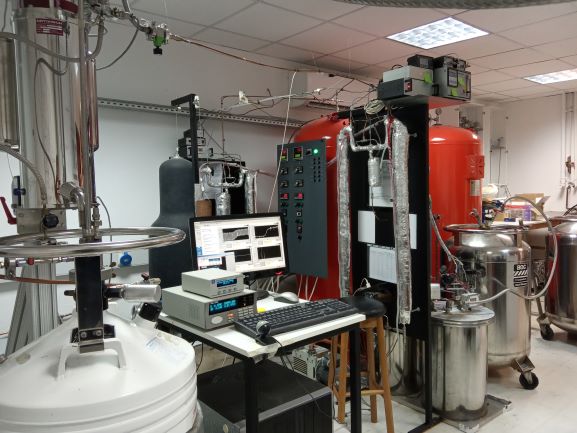In everyday life generating and measuring temperature is straightforward, but in the quantum world, which reflects the behaviour of atoms, controlling the temperature is extremely more challenging. At very cold temperatures (cf. -269°C or near zero on the Kelvin temperature scale), as atoms are frozen, we can 'see' unique phenomena that would otherwise be masked by the thermal motion of atoms. As, complex materials are more likely to uncover their quantum properties at cold sample environments, low temperature refrigeration is an essential requirement.
Applications:
A tailored-made, small-scale facility that supplies liquid helium (He) for the needs of our variable-temperature physical property measurement equipment. Reaching temperatures of a few degrees Kelvin that is super cold with respect to ambient, employs artificial means, resting on a pumped helium system, built around a digitally controlled pulsed tube cryorefrigerator. With this technology, warm helium gas comes in contact with the Cold Head, where its thermal energy is absorbed into the 4 K (-269°C) heat exchanger. The process reduces the He-gas temperature, increasing its density, dropping it lower inside a condensing chamber; until it contacts the 4 K surface, where it condenses.The facility recycles the valuable helium gas that boils off from the liquid He dewars of the SQUID magentometer and the magento-electric workstation cryostat operating in our Lab.
Specifications:
The CRYOMECH PT410 re-liquefier is designed to recondense the boil off from liquid helium dewar/cryostats. As the boil off rates may vary depending on the type of temperature-dependent experiments being carried out, we have developed a peripheral medium-pressure vessel assembly, where the excess He gas is stored for future use. This gas is prone to contamination from impurities, like O2 and N2 species, which can reduce the efficiency of the re-liquefier. To this extent a custom-made, digitally-controlled He-gas purification system has been engineered to remove the impurities from the He-gas stream by means of chemical adsorption techniques. All in all, the facility is designed to return the liquid helium to the original dewar/cryostat, establishing a closed He loop, with an average liquefication rate of about 10 lt/day.



